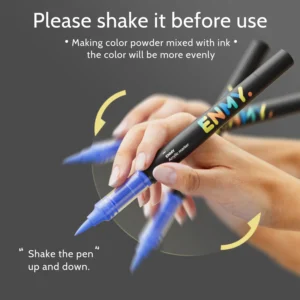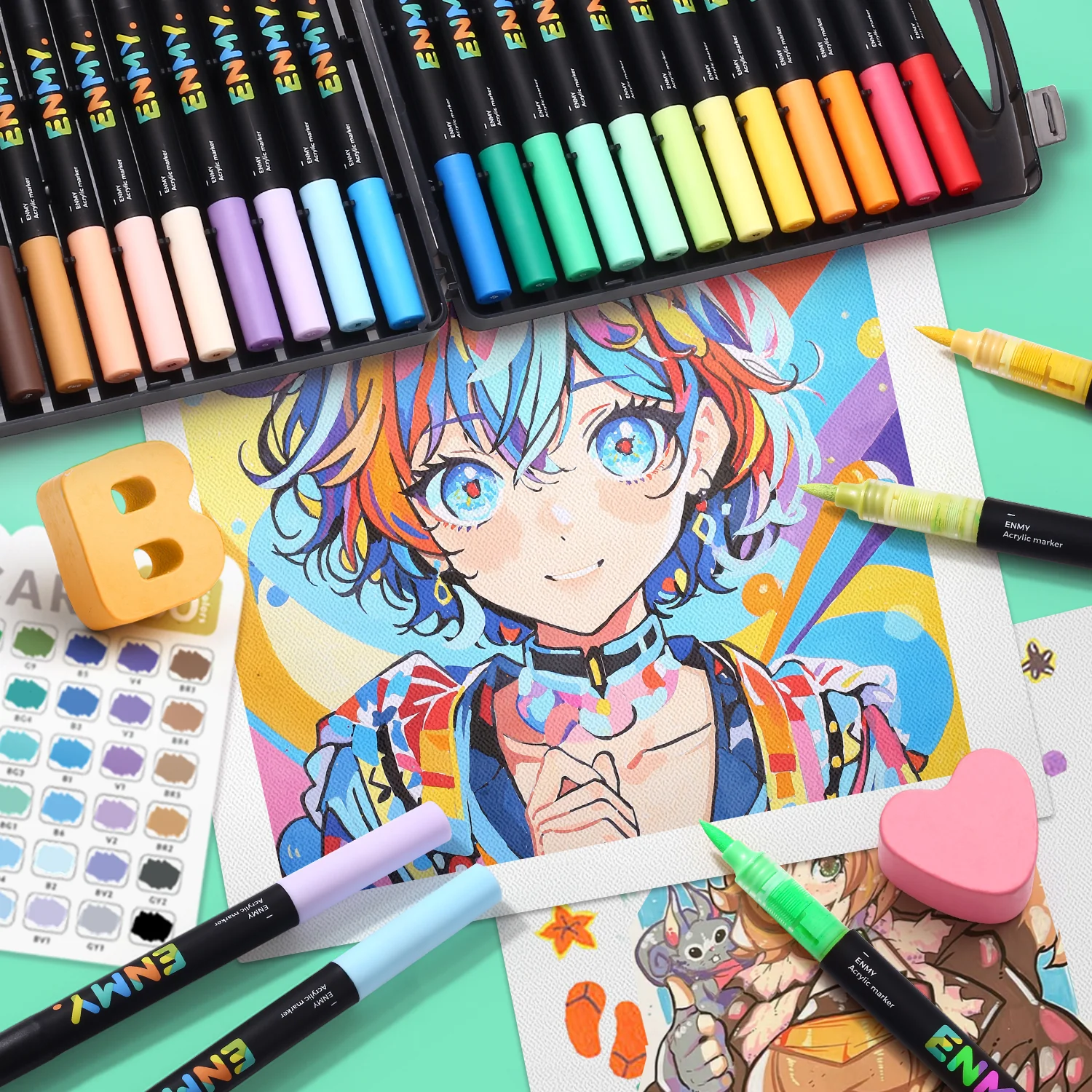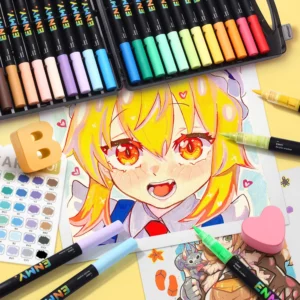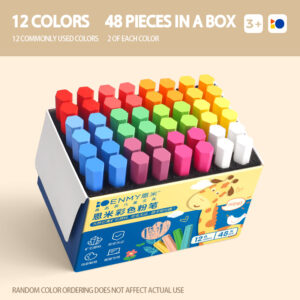Stationery, as an essential tool for knowledge inheritance and creative expression, its development process is like a vivid history of social and cultural changes. From ancient writing tools to today’s diverse products integrating technology and creativity, stationery has not only witnessed the progress of human civilization but also continuously adapted to and shaped people’s ways of learning, working, and living.

Historical Origin: The Evolution of Writing Tools
In the early days of human civilization, writing tools were extremely simple. In ancient times, people used sharp stones to carve simple symbols on animal bones, tree bark, or stone slabs, and these rough marks were the embryonic form of characters. Over time, writing brushes gradually rose in Oriental civilization. China has a long history of writing brushes, which are said to have been improved by Meng Tian in the Qin Dynasty. With bamboo as the tube and animal hair as the brush head, they are soft and elastic, able to write flexible and varied lines, and have become the core tools of Chinese calligraphy and painting art. Meanwhile, in the West, reed pens were once widely used. People sharpened reeds and dipped them in ink for writing.
In the Middle Ages, quill pens became popular in Europe. Goose feathers or crow feathers were specially treated, and the nibs were carefully trimmed, greatly improving the fluency of writing. In China, the invention of papermaking triggered a revolution in writing materials. Paper gradually replaced expensive and inconvenient carriers such as bamboo slips and silk, making the dissemination of knowledge more convenient. Later, the emergence of pencils brought new changes to writing, and their easy-to-modify characteristics were loved by people. In the 18th century, the invention of fountain pens further improved the efficiency and quality of writing. Ink flowed automatically from the pen tube to the nib, making writing more smooth.
Modern Development: Innovation in Function and Design
Entering modern society, the development of stationery shows a diversified trend. On the one hand, the functions are constantly expanding. In addition to the traditional functions of writing and drawing, stationery has begun to incorporate more practical elements. For example, pens with lighting functions are convenient for writing in dimly lit environments; notebooks with storage functions can hold small items such as sticky notes and business cards. The emergence of smart stationery has perfectly combined technology with stationery. Smart writing pads can convert written content into electronic documents in real-time and transmit them to computers or mobile phones via Bluetooth, facilitating editing and saving; electronic dictionaries not only have powerful word lookup functions but also provide various auxiliary learning functions such as voice reading and example sentence query.
On the other hand, more attention is paid to personalization and aesthetics in design. With the increasing youthfulness and diversification of consumer groups, stationery is no longer just a practical tool but also a carrier to show personality and taste. Co-branded products of cartoon images, animation IPs and stationery emerge in an endless stream. For example, well-known IPs such as Disney and Marvel cooperate with stationery brands to launch notebooks, pencil cases, folders, etc., printed with classic character patterns, which are loved by fans. Simple and fashionable Nordic design style and literary Japanese-style stationery also occupy a place in the market, meeting the aesthetic pursuit of different consumers. In addition, the concept of environmental protection is fully reflected in stationery design. Recyclable materials and biodegradable materials are widely used in stationery production, reducing pollution to the environment.
Market Dynamics: Competition and Change
Globally, the stationery market is large and highly competitive. Traditional stationery brands such as Chenguang, Deli, and Qixin occupy an important position in the market with their accumulated brand awareness, perfect sales channels, and stable product quality. At the same time, emerging brands are constantly emerging and gradually standing out through innovative product design, precise market positioning, and effective marketing strategies. The rise of online sales channels has changed the pattern of the stationery market. E-commerce platforms provide consumers with a more convenient shopping method and also expand the sales space for stationery brands. Consumers can easily compare the prices and functions of stationery of different brands and styles online and choose the most suitable products for themselves.
Facing market competition, stationery enterprises have increased their R&D investment and continuously launched new products to meet the increasingly diversified needs of consumers. For example, some enterprises focus on developing high-quality professional drawing stationery for professionals such as designers and illustrators; other enterprises are committed to developing enlightenment stationery suitable for children, focusing on the combination of interest and education. In addition, brand building and marketing have become the key to enterprise competition. Through holding stationery design competitions, carrying out offline experience activities, and using social media for promotion, stationery brands have established closer ties with consumers and enhanced brand influence and user loyalty.
Future Outlook: Integration and Expansion
Looking forward to the future, the stationery industry will continue to develop in the direction of integration and expansion. In terms of technology integration, with the continuous development of artificial intelligence, the Internet of Things, and other technologies, stationery will become more intelligent. For example, smart pens may have functions such as real-time translation and voice recognition, providing convenience for cross-border communication and learning; smart notebooks can provide personalized writing suggestions and typesetting optimization according to users’ writing habits. In terms of function expansion, stationery will be combined with more fields to create new application scenarios. For instance, combining with the medical field to develop professional stationery for recording illness and drawing charts of physical conditions; combining with the construction field to design architectural stationery with multiple functions such as measurement and drawing.
At the same time, environmental protection and sustainable development will become important themes in the development of the stationery industry. Consumers’ demand for environmentally friendly products is increasing, prompting stationery enterprises to pay more attention to the selection of materials and the improvement of production processes. Recyclable materials and low-carbon and environmentally friendly production methods will become the mainstream trend of the stationery industry. In addition, with the deepening of globalization, exchanges and integration between different cultures will also bring more inspiration to stationery design. Stationery will absorb excellent cultural elements from all over the world on the basis of inheriting local culture, presenting a more colorful look.
The development history of stationery is a vivid portrayal of the progress of human civilization. From simple writing tools to today’s products integrating multiple elements such as technology, creativity, and environmental protection, stationery has not only continuously met people’s needs for study, work, and life but also shown the changes of social culture and the development context of the times. In the future, the stationery industry will continue to be driven by innovation, write more wonderful chapters in integration and expansion, and bring more convenience and surprises to people’s lives.






